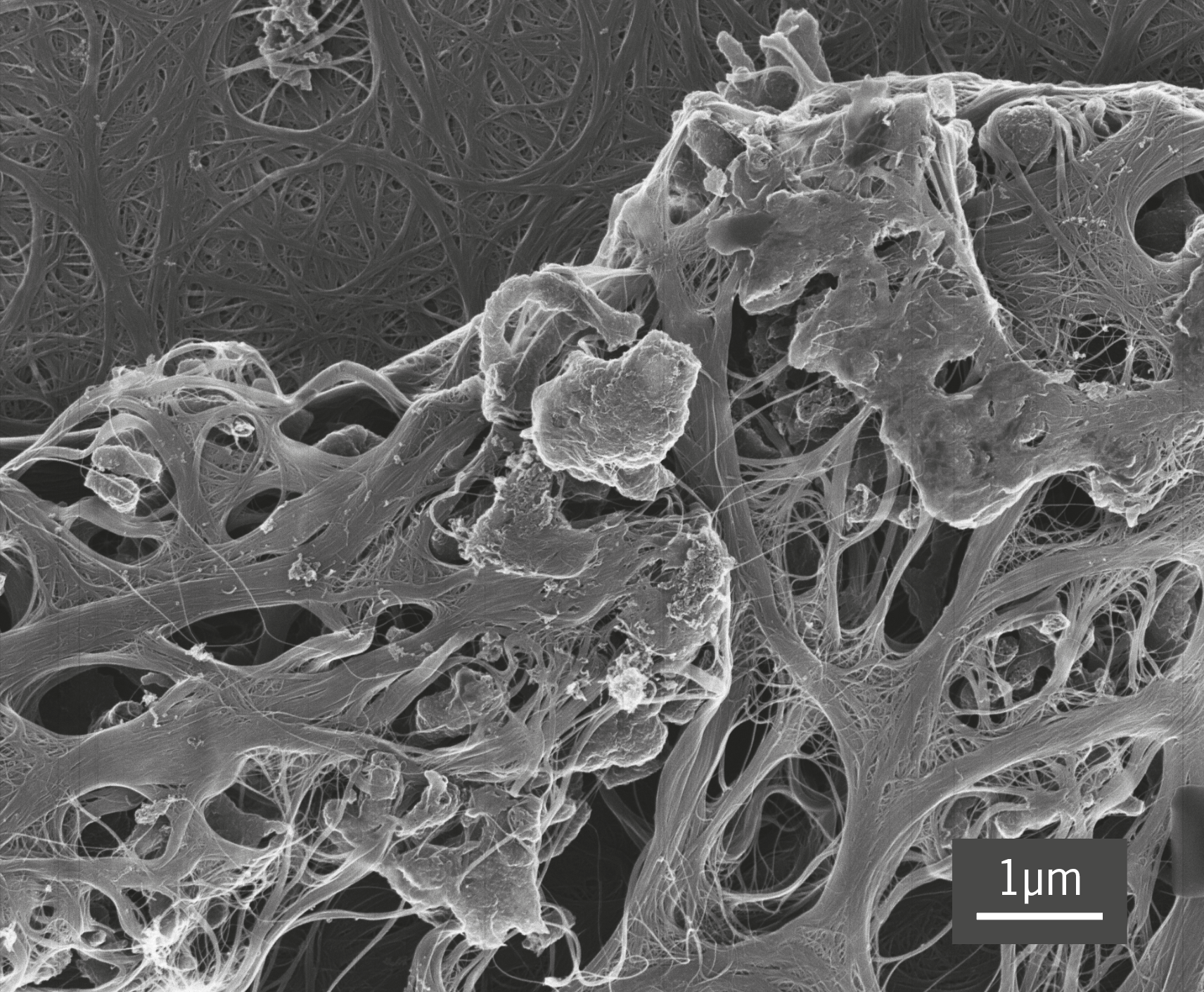Vehicles in particular need an extra energy spurt for acceleration, and this is where supercapacitors come in. They hold limited charge, but can deliver it very quickly – the perfect complement to mass–storage batteries.
A team at Queensland University of Technology (QUT) led by Dr Jinzhang Liu and Prof. Nunzio Motta is developing new-generation supercapacitors using advanced carbon materials. They will be smaller, lighter, cooler and chemically stable. An electrochemical process exfoliates graphite to produce graphene sheets in a liquid suspension. Filtering the sheets out of this suspension results in a thin ‘paper’ of graphene with extraordinary electrode properties. Double-walled carbon nanotubes were used to form a high-current collector sheet, and to form composite materials with graphene. A suite of microscopy techniques, including helium ion microscopy in the AMMRF (now Microscopy Australia) Linked Laboratory at QUT, was used to characterise the graphene and carbon nanotubes.
The completed devices generated a power density a thousand times higher than current lithium batteries. This power density provides the oompf needed for starting and hill climbing. These carbon-based devices are both strong and light, making it possible that vehicles of the future could be powered by their own body panels.

Helium ion microscope image of carbon nanotube–graphene composite.
Notarianni et al., Nanotechnology 25 (43) 2014
October 24, 2014